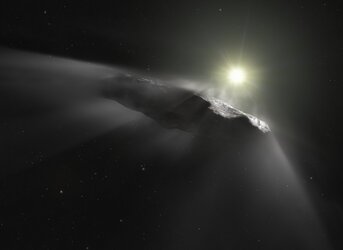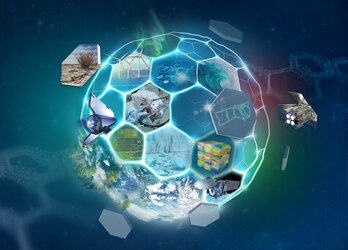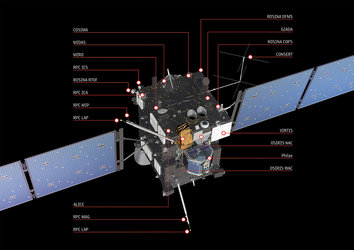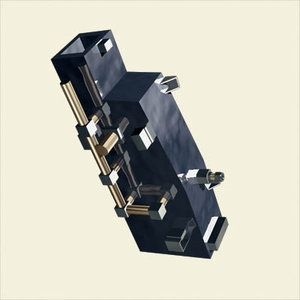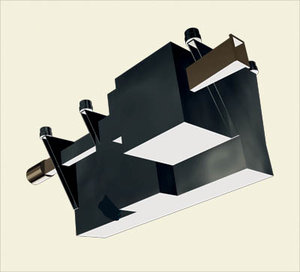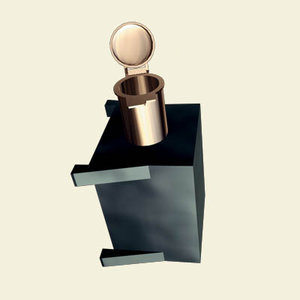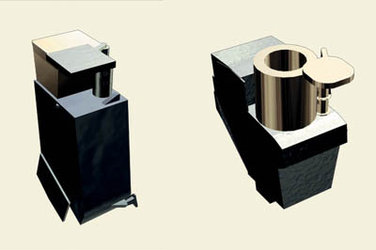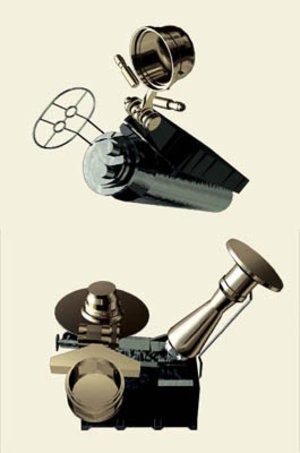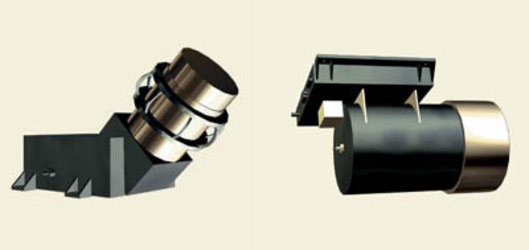CONSERT's first live performance: An interview with Wlodek Kofman
From the beautiful setting of the Grenoble mountains, the Director of the Laboratoire de Planetologie de Grenoble, Dr Wlodek Kofman, heads up the team responsible for CONSERT, an experiment on board the Rosetta spacecraft.
| Dr Wlodek Kofman Principal Investigator, CONSERT, Rosetta mission Born: 14 January 1945, in Leningrad (now St Petersburg), Russia After studying electronics at Warsaw Technical University, and mathematics at the University of Warsaw, Poland, Wlodek prepared his PhD thesis at the University of Grenoble, France, specialising in signal processing, followed by a These d’Etat in geophysics studying the Earth and, subsequently, other planets. As well as spending the last 10 years on CONSERT, he has also contributed the radar experiment on Mars Express. In honour of his contribution to the Rosetta mission, Wlodek has had an asteroid named after him: Asteroid 13368 is now 'Wlodekofman'. He is married with two grown-up children and lives in Grenoble. Although he says he does not ski as often as he used to, he likes to walk in the mountains at weekends, and enjoys reading and listening to music. |
ESA: What is CONSERT?
Wlodek Kofman: CONSERT stands for Comet Nucleus Sounding Experiment by Radio Transmission, which means that, using technology placed on both the lander and the orbiter, CONSERT will be sending radio waves through the comet’s nucleus in order to find out more about what is inside it.
ESA: How are you feeling now that the launch of Rosetta is finally approaching?
One of the most difficult problems we face is maintaining the level of knowledge in the team for that amount of time.
Wlodek Kofman: I am anxiously waiting for the launch, and, of course, we are hoping that everything will go smoothly. But, more than that, I am looking forward to having good results once we arrive at the comet.
ESA: The journey to the comet will take over 10 years, what is it like to be involved in such a long mission?
Wlodek Kofman: It means that we have to prepare for the very long term. One of the most difficult problems we face is trying to maintain the level of knowledge amongst the team for that amount of time.
It means that we have to make sure that we have young people in our team. Of course, I hope to still be working on the project when Rosetta arrives at the comet, but you have to prepare for every eventuality!
To maintain the experience of the team, we will continue to carry out similar experiments on mountains and glaciers here on Earth, and we also hope to place them on other space missions. We simply cannot stop these activities.
ESA: What are your hopes for your experiment, and why is it important?
Having experiments on both lander and orbiter has meant that I attend double the amount of meetings!
Wlodek Kofman: CONSERT is important because it is completely new – it has never been done before. Our major objective is to characterise the inside of the comet, and our experiment is the only one that is able to image the interior.
I first had the idea to use ‘tomography’ to explore a comet 10 years ago. Tomography is widely used in medicine when, for instance, X-rays are used to create scans of various parts of the body.
In a similar way, CONSERT will be sending radio waves through the comet nucleus, and we will be looking at how they are delayed as they travel through. These delays allow us to confirm its internal structure.
To measure this, we have had to put instruments on both the lander and the orbiter. Then, when the orbiter is on the opposite side of the comet to the lander, they can send signals to each other through the comet, and monitor the delays.
Having almost identical experiments on both the lander and the orbiter has brought its own challenges. For one thing, it has meant that I have had to attend double the amount of meetings! But also, the way that the two experiments connect with the comet are slightly different, so it has been a lot of work!
ESA: What do you find most fascinating about comets?
Wlodek Kofman: We simply don’t know what the interior of a comet is like. It could be a single block of the dirty porous ice or composed of small blocks, with layered structures or with an inhomogenous structure. It is finding out exactly what is inside that fascinates me.
ESA: When did you first become interested in space?
Interest in space is not enough - you have to work harder than other people and be passionate about your subject.
Wlodek Kofman: I was interested in the Solar System when I was young. But I think this interest grew when the first Sputnik was launched by Russia. I was living in Poland at the time, so there was a huge amount of publicity around it. This was the first time that I imagined that I could work in this field.
ESA: What advice would you give to someone wanting to enter the space field?
Wlodek Kofman: I firmly believe that an interest in space is not enough. To work in this field, you have to do the science, and this means that you simply have to work harder than other people. On top of this, you have to be passionate about your subject, as formulating experiments can take a long time. Often, you have no chance of receiving results for 10-15 years. However, I hope that things will speed up in the future!















 Germany
Germany
 Austria
Austria
 Belgium
Belgium
 Denmark
Denmark
 Spain
Spain
 Estonia
Estonia
 Finland
Finland
 France
France
 Greece
Greece
 Hungary
Hungary
 Ireland
Ireland
 Italy
Italy
 Luxembourg
Luxembourg
 Norway
Norway
 The Netherlands
The Netherlands
 Poland
Poland
 Portugal
Portugal
 Czechia
Czechia
 Romania
Romania
 United Kingdom
United Kingdom
 Slovenia
Slovenia
 Sweden
Sweden
 Switzerland
Switzerland














